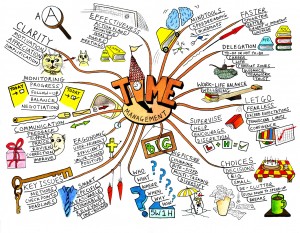 This is a post on mind mapping, a technique used to visually organize ideas, tasks and any set of related information. This is a concept popularized by Tony Buzan, who is also the founder of the World Memory Championship and a memory champion himself. I will share a couple of ways I use this technique, some applications I use, and how I am able to work on my ideas from my mobile devices, laptops, and desktops at work and at home. It really is such a simple concept and only requires couple of applications to use. Even just a notepad will do.
This is a post on mind mapping, a technique used to visually organize ideas, tasks and any set of related information. This is a concept popularized by Tony Buzan, who is also the founder of the World Memory Championship and a memory champion himself. I will share a couple of ways I use this technique, some applications I use, and how I am able to work on my ideas from my mobile devices, laptops, and desktops at work and at home. It really is such a simple concept and only requires couple of applications to use. Even just a notepad will do.
Every person has their own learning styles and preferences. For me, one of the more effective ways I learn is when information is presented in diagrams, pictures. I am constantly thinking about personal and professional goals, ideas like what would make a great student information system and how to improve business processes. I read a lot so I use mind map to compile notes from books, web pages and blogs, such as my research on instructional design. I also do presentations on social media, professional development and digital reputation from time to time. In preparing for presentations, I go through a process of brainstorming including what content to include and how to organize them into themes. Mobile computing, cloud services and common industry formats have really made it easier for anyone to work on the ideas anytime, anywhere. Here are a some tools I use:
iThoughts on iphone and iPad. I found this application to be the easiest to use in terms of the user interface and functionality. One of the features I really like is the cloud integration with itunes, Box and Dropbox services. This is very useful when I work on my ideas on multiple devices. Another useful feature is the ability to export/import diagrams using various industry formats like OPML, CSV, html and Freemind’s format.
Evernote. While I do most of my mind mapping on my computers, I still use paper from time to time. When ideas strike me and I only have my notepad, I write my thoughts immediately. I then take a picture of my notes and upload them to evernote into notebooks I organize by themes/ideas.
Freemind.This a free software that runs on Windows, Mac and Linux.
Dropbox. As I previously mentioned, this is where I upload/download and share the mind map documents I generate from iThoughts and Freemind.
Notepad. It’s not digital, but still effective.
As you can see, there is not too much when it comes to mind mapping, but it is a technique that is very powerful and effective when it comes to generating and documenting ideas. Happy mind mapping!
image credit: http://www.mindtools.com
